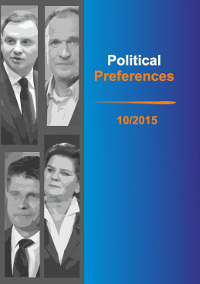

Polish political parties voters and social stratification problem
Article refers to the ratio of the party and their constituents facing the problems of social stratification. The analysis underwent voters of elections to the European Parliament and election to the local governments 2014. There were considered five Polish parties: Platforma Obywatelska, Prawoi Sprawiedliwość, Sojusz Lewicy Demokratycznej, Polskie Stronnictwo Ludowe, Nowa Prawica of Janusz Korwin-Mikke. The respondents’ preferences were also examined in the relation to the place on the political scene declared by them and defining accordingly as left wing, right wing and centre. It was questioned whether differences in income between rich and poor in Poland are too large and whether the state should seek to reduce income inequalities of citizens. For the voters of most of the parties income differences were too high. The voter majority also believed that the state was to reduce the differences. The majority of opponents of the state involvement was only in the group of voters of Nowa Prawica. The views of voters slightly differed in the context of left and right division.Download files
Citation rules

No. 10 (2015)
Published: 2015-01-01
 10.31261/polpre
10.31261/polpre